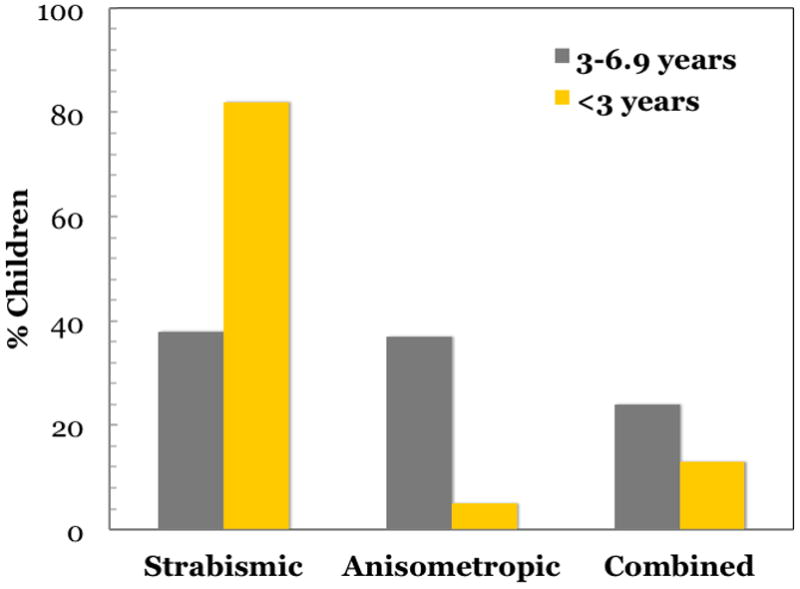Figure 1.

In the<3-year-old cohort,(Birch and Holmes, 2010) 82% of amblyopia was associated with strabismus, 5% with anisometropia, and 13% with combined mechanisms. This finding is strikingly different from the PEDIG 3- to 6-year-old cohort,(Pediatric Eye Disease Investigator Group, 2002a) where only 38% of amblyopia was associated with strabismus, 37% with anisometropia, and 24% with combined mechanism (p<0.001 for each of the 3 paired comparisons). Among children with strabismus in the <3-year-old cohort, 62% had infantile esotropia (onset ≤6 months of age), 22% had accommodative esotropia, 10% had acquired nonaccommodative esotropia (onset ≥7 months of age), and 6% had other types of strabismus.
